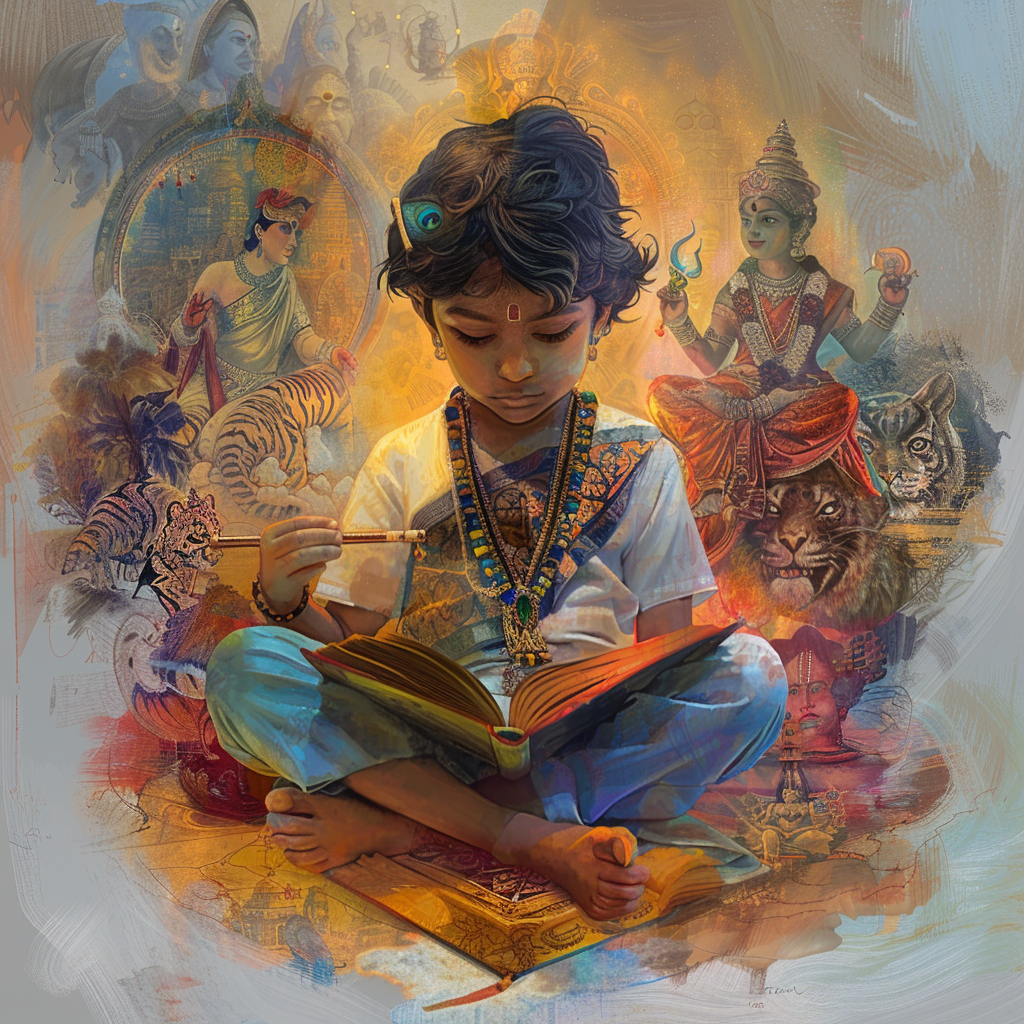Introduction:
From the captivating adventures of Lord Krishna to the profound wisdom of the Ramayana, Ancient Hindu stories have enthralled generations with their timeless tales. These narratives not only entertain but also serve a deeper purpose—they shape the minds and hearts of children in profound ways. In this exploration, we delve into the psychological impact of Ancient Hindu stories on the cognitive and emotional development of young minds.
The Power of Imagination:
One of the most significant benefits of exposing children to Ancient Hindu stories is the stimulation of their imaginations. These tales paint vivid landscapes of mythical realms, populated by gods, goddesses, and demons with extraordinary powers. As children immerse themselves in these narratives, their minds embark on journeys of creativity and wonder.
Imaginative play, inspired by these stories, allows children to explore different roles and scenarios. Whether they are reenacting the mischievous adventures of Lord Krishna or imagining themselves as valiant warriors like Lord Rama, these activities foster crucial cognitive skills. Research suggests that imaginative play enhances problem-solving abilities, social skills, and empathy, as children learn to inhabit the perspectives of diverse characters.
Moral Lessons and Emotional Development:
Ancient Hindu stories are rich with moral lessons and ethical dilemmas. Through the trials and triumphs of revered deities like Lord Rama and Lord Krishna, children glean insights into concepts such as duty, righteousness, compassion, and sacrifice. These tales provide a safe space for children to explore complex moral quandaries from a removed, yet deeply engaging, vantage point.
Consider the epic of the Ramayana, where Lord Rama’s unwavering devotion to duty and honor serves as a guiding light. As children follow his journey, they learn about the importance of righteousness and the consequences of one’s choices. Similarly, the playful antics of Lord Krishna in the Bhagavata Purana teach lessons about the power of love, friendship, and courage.
Engaging with these narratives encourages children to reflect on their own emotions and actions. They begin to develop a moral compass, distinguishing right from wrong, and cultivating empathy towards others. Moreover, encountering characters who face adversity with resilience and wisdom inspires children to confront challenges in their own lives with courage and determination.
Cultural Connection and Identity:
Ancient Hindu stories are deeply rooted in the cultural heritage of India, spanning millennia of tradition and belief. When children explore these narratives, they forge connections with their cultural roots and heritage. Whether it’s the divine tales of the Mahabharata or the mystical legends of the Puranas, these stories provide a window into the beliefs, values, and traditions of Hindu culture.
This exploration of cultural narratives fosters a sense of pride and belonging in children. They begin to understand that their own stories are part of a larger tapestry of Indian heritage. This sense of cultural identity can bolster self-esteem and resilience, providing a sturdy foundation as children navigate the complexities of the world around them.
Conclusion:
In the tapestry of a child’s development, Ancient Hindu stories weave threads of imagination, morality, and cultural identity. As children immerse themselves in these timeless tales, they embark on a journey of self-discovery and growth. The psychological impact is profound—nurturing creativity, fostering empathy, and instilling a deep connection with their cultural heritage.
Parents and educators have a unique opportunity to harness the power of Ancient Hindu stories to enrich the lives of children. By encouraging discussions, creative activities, and reflections on these narratives, we provide young minds with the tools to navigate the complexities of life with wisdom and compassion.
As we witness the spark of wonder in their eyes, we realize that within the realms of Hinduism, children find not just stories but mirrors of their own aspirations and the guiding stars of their development.
